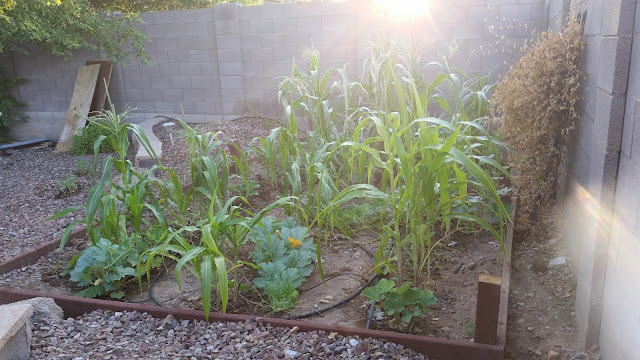This is been holding up my posting. I just hadn't finished it properly or explained it as well as I'd like. So I'm just going to post, and hope for the best.
We recently purchased solar panels for our house, and I wanted to lay out the analytical justification. I'm very analytical, and probably drove our main sales point-of-contact nuts with weeks of questions. We decided on purchasing our panels from Solar City. Here's how we arrived at that decision.
We recently purchased solar panels for our house, and I wanted to lay out the analytical justification. I'm very analytical, and probably drove our main sales point-of-contact nuts with weeks of questions. We decided on purchasing our panels from Solar City. Here's how we arrived at that decision.
Our electric utility provider is APS. We are on an equalizer plan where we pay the same amount every month, with adjustments here and there. Our monthly equalizer payment is $380.
Throughout 8 months of the year our electricity usage is pretty consistent at 1,600-1,800 kWh per month. June-September our usage spikes dramatically with the temperature and AC usage. July of 2014 was our biggest month at 5,020 kWh. Usually though we're at 4,000. The utility has a rate plan we use called "time advantage 7pm - noon" wherein we pay a peak rate for use between noon and 7 pm, and a lower rate for off peak. We do everything discretionary during off peak, i.e. laundry, dishwasher, pool pump. The air conditioner is the main peak usage. Also, we have natural gas in the house, which we use for the cook top, fireplace, water heater, and clothes dryer.
With solar panels the utility company doesn't change except for when we produce more than we use. We'll still use the peak/off peak rate plan. If our panels produce more energy (in kWh) than we use, they credit us with a future kWh. Solar peak production is 11 am-4 pm. So if during the hour of 11 am we use 2.5 kW, put our panel generates 8.5 kW, we have 6 off-peak kW we can use later, like that evening when the sun is down. Some scenario for peak hours.
Currently we pay $0.24 kWh summer peak ($0.20 kWh winter) and $0.06 off peak.
So the off peak rates are not bad. The solar system was designed to generate power when it's expensive to purchase, noon to 7.
Now here's nitty gritty. The system costs 30,000. The federal government has a tax credit of 30%, so in April I will get a tax credit of 12,000 between the federal and state. I have financed the panels with Solar City for 4% for 30 years. Our payment runs $105 to solar city. Our estimated new APS with be $150-$200. And that is the main economic reason for us.
On to other things. Jeff has been doing his mountain bike races all over. 2 weeks ago in Flagstaff.
This week in Prescott.
This is the start of the sophomore boys
And this is the end, 2 laps later.
We had a cool roadrunner on our front strip the other day.
And lastly.


















































